 |
Veneer Figures |
 |
 |
 |
 |
 |
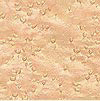
|
 |
Bird's Eye - Characterized
by its scattered circles or ovals that have a similar appearance
to that of a bird's eye. This type of figure is found almost
exclusively in Hard Maple. |
 |
 |

|
 |
 |
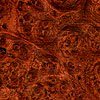 |
 |
Burl (or Burr) Veneer - Veneer
obtained from rare woody outgrowths appearing on trees around
grafts or injuries. This produces an appearance of a close
arrangement of many small eyes or knots intermingled with
distorted grain. The unusual patterns of burls make them
in high demand but also more expensive due to their small
size and scarcity. |
 |
 |
 |
 |
 |
|
 |
Crossfire - This term is used
to describe all of the various figure marks running perpendicular
to the veneer grain. In some wood species the crossfire
is a contrast of color, while others appear as an irregularity
of the grain creating the illusion of horizontal marks. |
 |
 |
 |
 |
 |
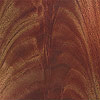 |
 |
Crotchwood - This type of
figure occurs where limbs emerge from the tree trunk. The
high amounts of fiber distortion at this junction results
in a feather or flame pattern appearance. Mahogany is the
most common specie with this type of figuring. |
 |
 |
 |
 |
 |
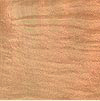 |
 |
Curly - The term used for
a wavy or curly figuring produced by distorted fiber growth
that reflects light differently. Most commonly available
in Walnut and Maple veneers. |
 |
 |
 |
 |
 |
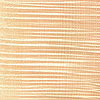 |
 |
Fiddleback - A term describing
consistent ripple figure running across the grain. Fiddleback
is not commonly found but occasionally occurs in Mahogany,
English Sycamore, and Anigre. The term fiddleback comes
from the veneer's popularity in making violin backs. |
 |
 |
 |
 |
 |
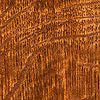 |
 |
Flake - This is found only
in species that have prominent medullary rays (cells radiating
outward from the center of the tree, like the spokes of
a wheel.) By slicing the veneer perpendicular to the annular
rings and parallel with the rays, a distinctive "flake"
within the figure is created. |
 |
 |
 |
 |
 |
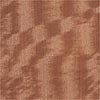 |
 |
Mottle - Mottle is the intermingling
of broken cross markings with stripe figure. Block mottle
involves broad cross markings producing a patch effect and
is commonly found in Makore. Bees-wing-mottle is very small,
fine figure and often occurs in Sapele, Satinwood and Black
Bean. |
 |
 |
 |
 |
 |
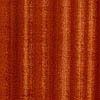 |
 |
Plain Stripe and Ribbon Stripe
- The figure is straight and parallel with the length of
veneer as a result of quarter slicing the log. Ribbon stripe
is similar but with variable width bands, alternating light
and dark, that create the appearance of ribbons. |
 |
 |
 |
 |
 |
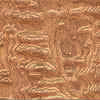 |
 |
Peanut Shell - A quilted or
blistered figure that incorporates a dominant grain or yearring
pattern. Mostly found in Tamo or Bubinga. |
 |
 |
 |
 |
 |
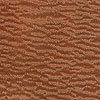 |
 |
Pommele - Pommele gets its
name from the French word for "apple." The figure
resembles small round or oval circles that can overlap each
other. Sometimes a log that has larger and more sparsely
occurring "apples" can be referred to as blistered.
|
 |
 |
 |
 |
 |
|
 |
Quilted - This figuring is
produced by rotary or half-round slicing of logs that have
a "bumpy" surface. The uneven weaving of the growth
rings produces a quilted, three-dimensional effect. Maple
and Mahogany are species often available with quilted figure.
|
 |
 |
 |
 |
 |
|
 |
Recomposed or Man-made Veneers
- These veneers are sliced from man-made "cants"
that have been laminated, or resliced, to produce distinctive
figures or patterns. |
 |
 |
 |
 |
 |
 |
 |
 |
Veneer Cuts |
 |
 |
 |
 |
 |
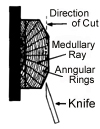 |
 |
Flat Cut or Plain Sliced -
(defined by a cathedral or heart) Half a log is mounted
on a large steel rack which moves up and down through a
stationary knife through a series of vertical, parallel
cuts. This produces consecutive leaves of veneer with the
standard appearance of veneer (the "cathedral"
or flame-shaped arch). When a log is flat cut it will generate
flat cut bundles. As you get to the center of the log, normally
the rest of the flitch is split open to produce a quartered
look called flat cut quarters.
|
 |
 |

|
 |
 |
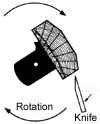 |
 |
Half Round Slicing - (modified
characteristics of both rotary and flat cut veneers) A half
of a log is mounted so that it will cause the blade to cut
slightly across the growth rings. This is primarily used
to accentuate the grain in various woods such as in burls
or Bird's Eye Maple, or to gain a wider width on a cathedral
on small dimension logs. |
 |
 |
 |
 |
 |
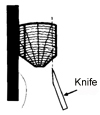 |
 |
Quarter Cut - (straight grain
or ribbon-striped appearance) A quarter of the log is mounted
off center so that the growth rings strike the knife at
a right angle. The edge of the annual rings create the lineal
figure of the veneer. Quartered leaves cut consecutively
are narrower than plain sliced and typically contain straighter
grain. Some flake is produced when cutting through the medullary
rays, especially in Oak. |
 |
 |
 |
 |
 |
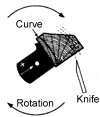 |
 |
Rift Cut - (a straight grain
effect similar to true quarter cut veneer) Used in Oak to
minimize the "flake" effect, the cant is cut at
an angle of 15 degrees off the quartered position. |
 |
 |
 |
 |
 |
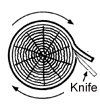 |
 |
Rotary Cut - (creates a bold
sometimes wild, variated grain) An entire log is mounted
so that the log turns on its long axis. While spinning,
the knife advances toward the center of the log slicing
or peeling a continuous sheet of veneer. Sometimes a score
line is cut into the log to give the effect of consecutive
sheets. This is especially true of burls and Bird's Eye
Maple. |
 |
 |
 |
 |
 |
 |
 |
 |
Veneer Matches |
 |
 |
 |
 |
 |
 |
 |
Balance Match - The width
of each veneer leaf in a panel is the same, but there can
be any number of leaves. |
 |
 |

|
 |
 |
 |
 |
Book Match - Every other leaf
is turned over like the pages in a book. This is the most
popular matching method and creates a symmetrical pattern
and a series of pairs. |
 |
 |
 |
 |
 |
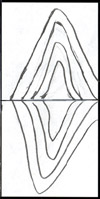 |
 |
Butt or End Match - The veneer
is joined end to end and side to side. This is sometimes
used when the veneer is not long enough to cover the desired
panel height. It is also a popular method for burls, crotches,
and highly decorative veneers. |
 |
 |
 |
 |
 |
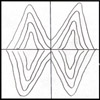 |
 |
Book and Butt Match - The
veneer is joined from side to side and end to end. |
 |
 |
 |
 |
 |
|
 |
Center Match - Each face has
an even number of veneer sheets, but the widths are not
necessarily the same. The center joint will be in the middle
of the panel. |
 |
 |
 |
 |
 |
 |
 |
Diamond Match/Box Match -
Four equal pieces of veneer are cut diagonally to the usually
straight grain. These are matched to create a diamond pattern.
In a reverse diamond match, the pieces are matched so that
the grain direction runs toward the middle. |
 |
 |
 |
 |
 |
|
 |
Pie Match/Sunburst Match -
Consecutive sheets are trimmed into pie shaped pieces and
matched in a circular fashion in which the points meet in
the center. Mostly used on round, oval or octagonal shaped
panels. |
 |
 |
 |
 |
 |
|
 |
Random Match - Deliberate
mismatched leaves are placed next to each other to give
a rustic, natural look. This works especially well with
knotty or wormy species. |
 |
 |
 |
 |
 |
 |
 |
Slip Match - Consecutive sheets
are slipped out in sequence to expose the same side of veneer
and a repeating grain figure. The result is a series of
grain repeats, but no pairs. |
 |
 |
 |
 |
 |
 |
 |
 |
Other Veneer Terms |
 |
 |
 |
 |
 |
Backed
Veneer |
 |
Veneer which has been backed with
special paper laminate veneer or other material. |
 |
 |
|
 |
 |
Butt
End |
 |
Part of the veneer corresponding
to the stump-wood from which it was obtained. |
 |
 |
|
 |
 |
Checks |
 |
Splits in the longitudinal separation
of the fibers in the veneer or that may occur at the joining
of the veneer leaves. |
 |
 |
 |
 |
 |
Clipper |
 |
A machine that uses a swinging knife
for trimming and clipping. |
 |
 |
|
 |
 |
Clipping |
 |
The process for trimming veneer to
make it suitable for jointing or to cut out undesirable
patterns or defects. |
 |
 |
|
 |
 |
Dye |
 |
Vat or pressure infused process to
produce colored veneers. |
 |
 |
|
 |
 |
Edge
Banding |
 |
Strips of veneer joined continuously
head-on to be applied onto the sides of the substrate. |
 |
 |
 |
 |
 |
Finger
Jointing |
 |
Joining together two veneers by means
of a series of interlocking "fingers" at the edge
ends and held together with an adhesive. |
 |
 |
 |
 |
 |
Flattened
Veneer |
 |
Veneer which has undergone flattening
operations. |
 |
 |
|
 |
 |
Gum |
 |
A small patch of accumulated gum
(mineral or resin) that commonly occurs in American Cherry
and Beech. It is often the result of crown damage, bird
pecks, or other insect damage. |
 |
 |
|
 |
 |
Hand
Sample |
 |
Approximately 8"x11", a
hand sample may be from a specific log or may be a general
type sample representing a species as a whole. |
 |
 |
 |
 |
 |
Heartwood |
 |
The inner core of a mature log, usually
darker in color that the sapwood. |
 |
 |
 |
 |
 |
Holes |
 |
Holes in the veneer due to the loss
of loose knots or caused by defects in the log. |
 |
 |
 |
 |
 |
Inlay |
 |
Thin strips of veneers used for decorative
purposes. Usually sold in one meter lengths, the various
types commercially available today are; Stringings, Flat
lines, Square lines, Purfling and Bandings. |
 |
 |
 |
 |
 |
Knot |
 |
A place in the wood where a branch
had grown out of the heartwood. |
 |
 |
 |
 |
 |
Live
Sample |
 |
Single sheets of veneer pulled out
of a log to represent the whole log. (Our live samples are
sent for selection, and those not chosen must be returned
or a resampling charge will be accessed.) |
 |
 |
 |
 |
 |
Marquetry |
 |
Joining veneers of different colors
and species to obtain a specific pattern. |
 |
 |
 |
 |
 |
Matching |
 |
Joining veneers in a sequence according
to their natural sequential order or to obtain specific
dimensions and a pattern desired. |
 |
 |
 |
 |
 |
Numbering |
 |
Assigned for inventory and sampling
purposes. Log number: each log is assigned a separate number.
Flitch number: half a log is given a separate number. Section
number: sometimes different sections are numbered by adding
a dash and another number to the log or flitch number to
show it came from the same tree. Bundle number: number given
to a specific number of sheets that are tied together. |
 |
 |
 |
 |
 |
Pallet |
 |
Pallet - A flat wooden frame used
to handle and store or ship bundles of veneer.
|
 |
 |
 |
 |
 |
Pinknot |
 |
A single cluster of very small knots. |
 |
 |
 |
 |
 |
Pore |
 |
A minute opening that is a moisture
conducting cell. |
 |
 |
 |
 |
 |
Pre-Dyed
Veneer |
 |
Veneer that has been dyed throughout
with any color before it is applied to a substrate. |
 |
 |
 |
 |
 |
Resin |
 |
Natural vegetable substance found
in the wood of many trees, especially conifers. Similar
to pitch pocket. |
 |
 |
 |
 |
 |
Sap |
 |
A juice or circulating fluid found
in trees. |
 |
 |
 |
 |
 |
Sapwood |
 |
The soft wood beneath the inner bark
through which the sap flows. Often lighter in color than
the central heartwood. |
 |
 |
 |
 |
 |
Solid
Wood |
 |
Wood thicker than three millimeters
(approximately an eighth of an inch). |
 |
 |
 |
 |
 |
Splits |
 |
Cracks or tears in the veneer. |
 |
 |
 |
 |
 |
Stained
Veneer |
 |
A veneer which has been stained by
an external factor such as mold, light, grease etc., or
end stain which is the stain that often occurs at the end
of a log. |
 |
 |
 |
 |
 |
Steamed
Veneer |
 |
Veneer obtained from logs that have
been pre-treated by steaming. |
 |
 |
 |
 |
 |
Stump-Wood
Veneer |
 |
Veneer obtained from the butt log
or "stump" of a tree. Marked with irregular veining.
|
 |
 |
 |
 |
 |
Trimmed
Veneer |
 |
Veneer which has undergone trimming.
|
 |
 |
 |
 |
 |
Trimming |
 |
Veneer is trimmed lengthwise to remove
defects and to make the veneer sides parallel and suitable
for joining. |
 |
 |
 |
 |
 |
Visible
Surface Veneer |
 |
The veneer that is to be applied
to the visible side of the substrate. |
 |
 |
 |
 |
 |
Waste |
 |
The part of the veneer that is removed
during trimming. |
 |
 |
 |
 |
 |
Yield |
 |
The calculation of raw veneer footage,
necessary to make net footage on panels. |
 |
 |
 |
 |
 |
 |
 |
 |
 |
 |
 |
 |
 |
 |